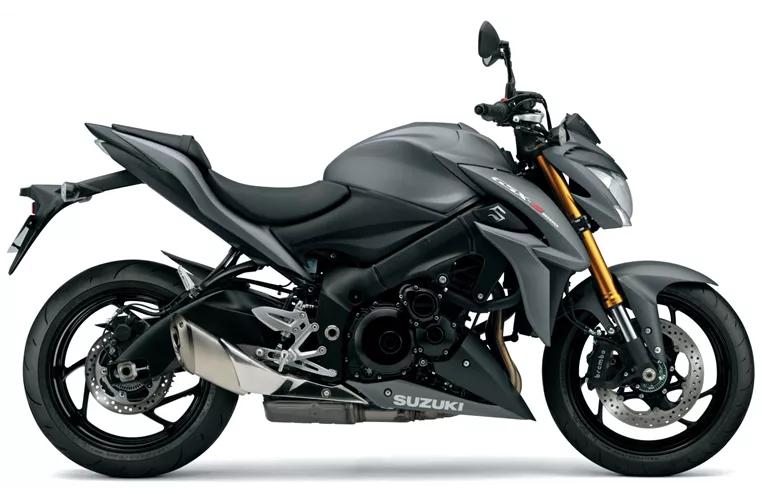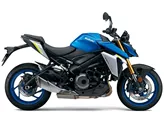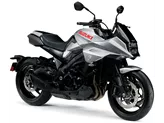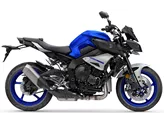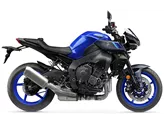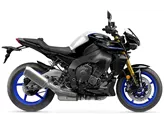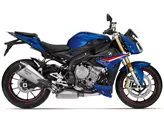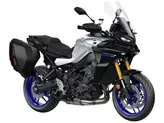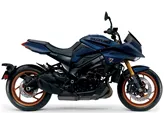Suzuki GSX-S1000 2016 vs. Yamaha MT-10 2017

Suzuki GSX-S1000 2016

Yamaha MT-10 2017
Overview - Suzuki GSX-S1000 2016 vs Yamaha MT-10 2017
The Suzuki GSX-S1000 2016 and the Yamaha MT-10 2017 are both naked bikes with similar engine types, inline four-cylinder engines with liquid cooling and fuel injection systems. However, there are some notable differences between the two models.
In terms of engine power, the Yamaha MT-10 2017 has a slight advantage with 160 HP compared to the Suzuki GSX-S1000 2016's 149 HP. The Yamaha also has a higher torque of 111 Nm compared to the Suzuki's 106 Nm. This means that the Yamaha may offer slightly better acceleration and overall performance.
Both bikes feature upside-down telescopic forks for the front suspension and swing arm with a monoshock for the rear suspension. This setup provides good stability and handling for both models. However, the Yamaha MT-10 2017 has an additional advantage with its Deltabox frame, which is known for its rigidity and improved handling characteristics compared to the Suzuki's twin tube aluminum frame.
In terms of braking, both bikes have double disk brakes at the front with similar diameters. However, the Yamaha MT-10 2017 has slightly larger front disks with a diameter of 320 mm compared to the Suzuki GSX-S1000 2016's 310 mm. This may provide slightly better braking performance for the Yamaha.

Suzuki GSX-S1000 2016
Both bikes come equipped with ABS as an advanced rider assistance system, which enhances safety by preventing wheel lock-up during braking. However, the Yamaha MT-10 2017 also features traction control, providing additional stability and control during acceleration.
In terms of dimensions and weights, both bikes have similar front and rear tire widths and diameters. The Yamaha MT-10 2017 has a slightly shorter wheelbase of 1400 mm compared to the Suzuki GSX-S1000 2016's 1460 mm. This may result in slightly different handling characteristics for the two models.
The seat height of the Yamaha MT-10 2017 is slightly higher at 825 mm compared to the Suzuki GSX-S1000 2016's 815 mm. This may affect the comfort and ergonomics for different riders.
In terms of weight, both bikes have similar kerb weights with ABS, with the Yamaha MT-10 2017 weighing 210 kg and the Suzuki GSX-S1000 2016 weighing 209 kg. This means that there is not much difference in terms of weight between the two models.

Yamaha MT-10 2017
Both bikes have a fuel tank capacity of 17 liters, providing a decent range for longer rides.
In terms of strengths, the Suzuki GSX-S1000 2016 is praised for its powerful engine, good braking control, stable and sensitive chassis, comfortable seating position, and relatively low price. On the other hand, the Yamaha MT-10 2017 is praised for its great sound, pleasant wind protection, comfortable seating position even on long tours, great engine response, and balanced overall package despite its radical looks and wicked sound.
In terms of weaknesses, the Suzuki GSX-S1000 2016 is criticized for its front end appearance and its throttle response in the lower rev range, which is considered to be too aggressive. The Yamaha MT-10 2017 is criticized for its inactive seating position on the racetrack and its chassis and ride assistance systems, which are considered to be sufficient for track days but not on the same level as other Powernakeds.
Overall, both the Suzuki GSX-S1000 2016 and the Yamaha MT-10 2017 are capable naked bikes with their own strengths and weaknesses. Depending on individual preferences and priorities, riders can choose between the two models based on factors such as engine power, handling, rider assistance systems, and overall riding experience.
Technical Specifications Suzuki GSX-S1000 2016 compared to Yamaha MT-10 2017
Pros and Cons in comparison
Pros and Cons in comparison
Suzuki GSX-S1000 2016
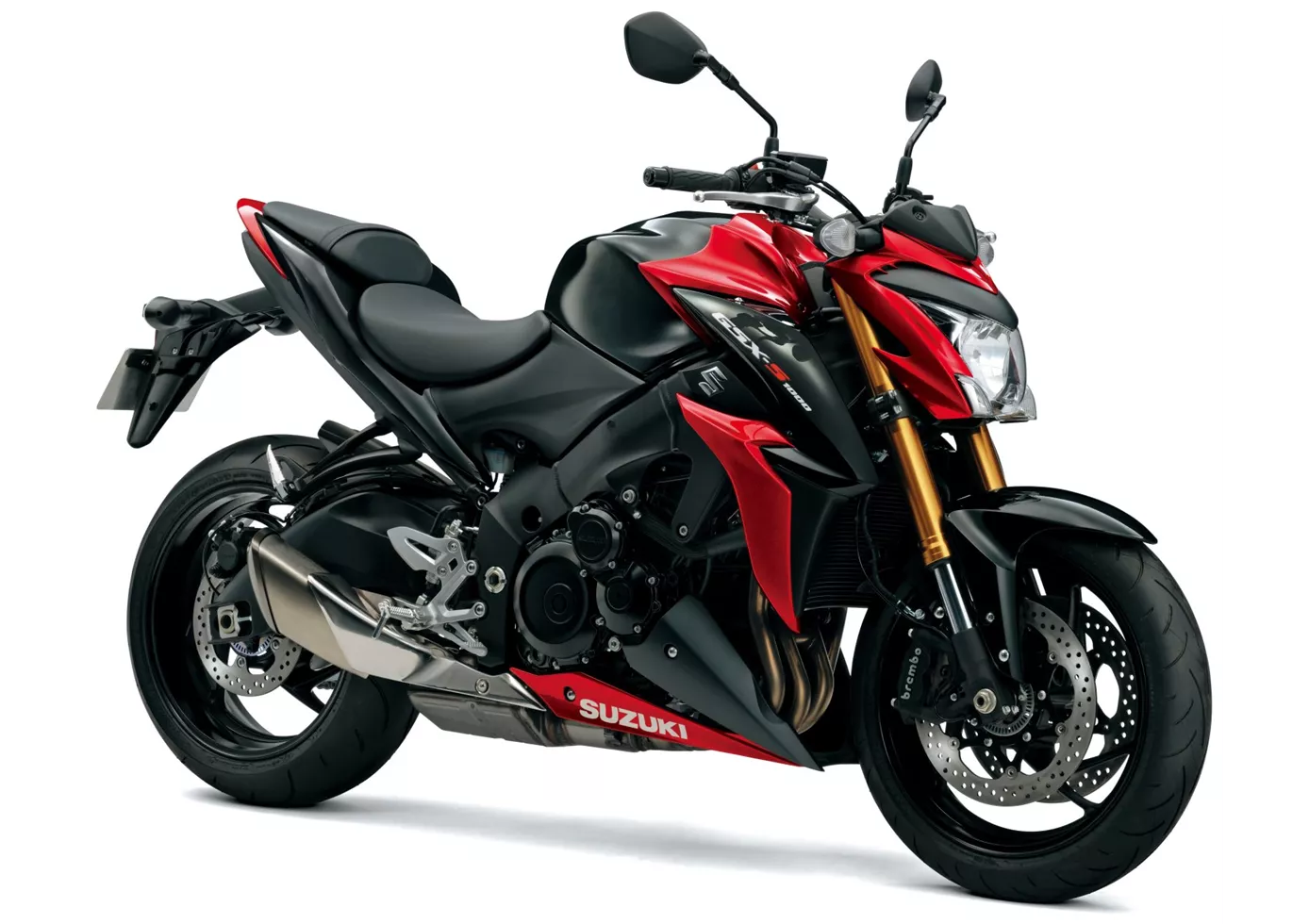
Some might be surprised that after waiting so long, Suzuki did not launch the ultimate, uncompromising power naked bike. Instead, the Suzuki GSX-S 1000 with its 149 hp seems almost too well-behaved. But once you ride it on the race track, you quickly realise that the engine is far more powerful in real life and that the rest of the performance of the chassis and braking system is also impressive. In return, it also offers a large portion of everyday and practical suitability - not bad ingredients when you have to cover everything from everyday to race track with a single bike.
Yamaha MT-10 2017

The Yamaha MT-10 exudes a lot of emotion with the cool CP4 engine, but also doesn't forget pragmatic utility. For a naked bike, it offers a lot of comfort on long tours. It rides fast but is still refined at all times. On the racetrack, the chassis is not precise enough to beat the other Powernakeds. Overall, however, it scores with its versatility paired with radical looks and awesome sound.
Price Comparison Avarage Market Price Suzuki GSX-S1000 vs Yamaha MT-10
There are a few key differences between a Suzuki GSX-S1000 2016 and a Yamaha MT-10 2017. In terms of price, the actual average price of a Yamaha MT-10 2017 is about 20% higher. A Suzuki GSX-S1000 2016 experiences a loss of 90 GBP in one year and 1,340 GBP in two years of ownership. This is offset by a loss of 1,010 GBP and 1,700 GBP for a Yamaha MT-10 2017. Compared to Yamaha MT-10 2017 there are less Suzuki GSX-S1000 2016 bikes available on the 1000PS.de Marketplace, specifically 10 compared to 12. It takes less time to sell a Suzuki GSX-S1000 with 109 days compared to 143 days for a Yamaha MT-10. Since model year 2015 1000PS.de editors have written 36 reviews for the Suzuki GSX-S1000 and 32 reviews for the Yamaha MT-10 since model year 2016. The first review for the Suzuki GSX-S1000 was published on 27/09/2014 and now has more than 17,100 views. This compares to more than 20,700 views for the first review on Yamaha MT-10 published on 17/11/2015.
